If you want to make your baby’s first puree, try this Green Bean Baby Food recipe! Steamed until just soft, this smooth, healthy puree has a mild taste that will help your baby’s developing taste buds. It’s a great Stage 1 Baby Food for 4-6 months and up.
Medically reviewed and co-written by Jamie Johnson, Registered Dietitian Nutritionist (RDN), and Lauren Braaten, Pediatric Occupational Therapist (OT).
This homemade green bean puree is not only full of essential nutrients, but it is also delicious!
I know it’s hard to believe because green beans that have been pureed and fed to babies get a bad name.
We start with fresh or frozen green beans that are gently steamed to bring out the freshness. Then, we blend them into a velvety and creamy puree for baby. A little cilantro, parsley, or basil is added to this puree to round out the flavor, but you don’t have to do that if you don’t want to. We gently cook the green beans in this way, so their flavor doesn’t get strong. This makes the perfect light puree for your baby’s first bite.
Green bean puree is one of the best first foods to introduce to your baby It has a mild flavor that most babies enjoy, and is packed with important vitamins and minerals Making your own pureed green beans at home is easy, economical and ensures your baby gets the freshest, healthiest food possible.
In this comprehensive guide, I will walk you through everything you need to know to make green bean puree for your little one, including:
- Benefits of Green Beans
- Choosing the Best Green Beans
- Prep and Cook Time
- Step-by-Step Cooking Instructions
- Blending the Puree
- Adding Flavor Boosts
- Storage and Freezing
- Serving Suggestions and Combinations
- Troubleshooting Common Issues
So let’s get started!
Why Green Beans Make a Great First Food
Green beans provide the following key nutrients for your growing baby:
- Vitamin C – supports immune system health
- Vitamin K – aids blood clotting and bone development
- Fiber – promotes healthy digestion
- Manganese – helps metabolize carbs and nutrients
- Folate – assists in cell growth and function
In addition green beans have a very mild sweet flavor that makes them perfect for beginner palates. They are soft, easy to swallow and rarely cause allergic reactions.
Many pediatricians recommend green beans as one of the best vegetables to introduce during the transition to solids around 6 months. The American Academy of Pediatrics approves starting solids between 4-6 months once your baby can sit up and hold their head steady. Always check with your doctor before starting any new foods.
Choosing the Best Green Beans
When selecting green beans, you have two basic options:
Fresh Green Beans
Look for slender, crisp green beans with a bright green color. Avoid beans that are limp, wilted or have brown spots. Fresh green beans are available year-round.
Frozen Green Beans
Opt for frozen green beans with no added salt or seasonings. They are picked at peak ripeness and frozen quickly to lock in nutrients. Organic varieties are affordable and readily available in the frozen section.
I recommend having both fresh and frozen on hand. Use fresh when possible, and rely on frozen for convenience.
No matter which you choose, organic is best to avoid pesticides.
Green Bean Puree Prep and Cook Time
- Prep time: 5 minutes
- Cook time: 10 minutes
- Total time: 15 minutes
This quick cooking method brings out the perfect tender-crisp texture in green beans.
Step-by-Step Instructions for Making Green Bean Puree
Follow these simple steps for homemade green bean puree:
1. Wash and Trim the Green Beans
Rinse 1 pound of green beans under running water. Trim off both ends. I find kitchen shears easiest for this job.
2. Steam the Green Beans
Add 1-2 inches of water to a saucepan and insert a steamer basket. Bring to a boil.
Add green beans, cover, and steam for 7-10 minutes until tender when pierced with a fork.
Steaming preserves more nutrients compared to boiling.
3. Transfer to a Blender
Allow green beans to cool slightly. Pour into a blender along with 2-3 tablespoons of the steaming liquid to help thin the puree.
4. Blend Until Smooth
Blend for 1-2 minutes until completely smooth, stopping to scrape down sides as needed. Add more steaming liquid if needed to reach a smooth, pudding-like consistency.
5. Cool and Serve
Allow puree to cool completely before serving. You can serve immediately, store in the fridge up to 4 days, or freeze for later use.
Flavor Boosts for Green Bean Puree
Plain green beans make a perfect starter puree. Once your baby acclimates to the flavor, try adding any of these tasty mix-ins:
- Fresh basil, cilantro or parsley
- Lemon juice
- Garlic powder
- Olive oil or avocado oil
- Hemp seeds
- Ground cumin or curry powder
- Diced cooked chicken
Spices introduce new flavors and provide nutrition. Start with just a pinch and gradually increase based on your baby’s reaction.
Storing and Freezing Green Bean Puree
Proper storage is key to ensure safety and preserve nutrients:
-
Fridge: Store puree in an airtight container for up to 4 days.
-
Freezer: Freeze in ice cube trays, then transfer to bags. Keeps for 2-3 months.
-
Reheating: Microwave or simmer on the stove until warm. Stir frequently.
Clearly label all purees with the date before storing. Don’t refreeze after thawing.
Serving and Combining Green Bean Puree
Here are some nutritious ways to serve up green bean goodness:
- Mix into infant cereal or yogurt
- Combine with other veggies like carrots or sweet potatoes
- Add to smoothies
- Freeze into popsicles for teething
- Spread on toast or crackers as finger food
- Mix into scrambled eggs or mac and cheese
Try combining with fruits like applesauce or mango for balanced sweetness.
Troubleshooting Green Bean Puree Problems
Here are some common issues and how to avoid them:
Puree too chunky: Blend longer or add more liquid to smoothen.
Beans too tough: Overcooking makes beans mushy. Steam 7-10 minutes only until just tender.
Beans cause gas: Introduce slowly and combine with non-gassy veggies like carrots.
Allergic reaction: Discontinue use if any rash, vomiting or diarrhea appears.
Picky eater refuses: Offer repeatedly along with preferred foods. May take over a dozen tries.
Don’t get discouraged if your baby rejects green beans at first. Keep offering a spoonful at meals along with their favorite foods. This repeated exposure will eventually get them interested.
Homemade green bean puree is easy, budget-friendly and loaded with nutrition for your growing baby. Follow the step-by-step guide and safety tips above to whip up a healthy batch quickly.
The mild taste and smooth texture makes green beans an ideal starter food. Feel confident knowing exactly what goes into your baby’s diet when you make your own purees. Let green beans be one of the very first steps in your baby’s exciting food journey.

k
Health Benefits of Green Beans
- Good source of fiber to help with any digestive issue.
- Vitamin C is found in large amounts and helps your baby’s immune system.
- A good source of vitamin K to help strengthen bones.
Want to know more about how green beans can help your baby? Read the whole Green Bean Profile here.
Green Bean Tip: You can use either fresh or frozen green beans for this recipe. If you want to use organic but don’t have a lot of money, look in the freezer section for frozen organic green beans. They are cheaper than fresh regular green beans.
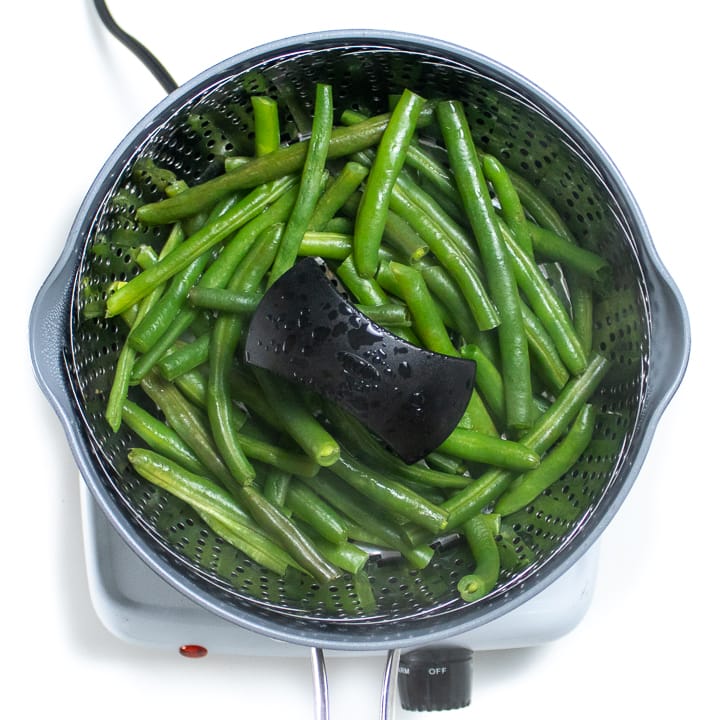

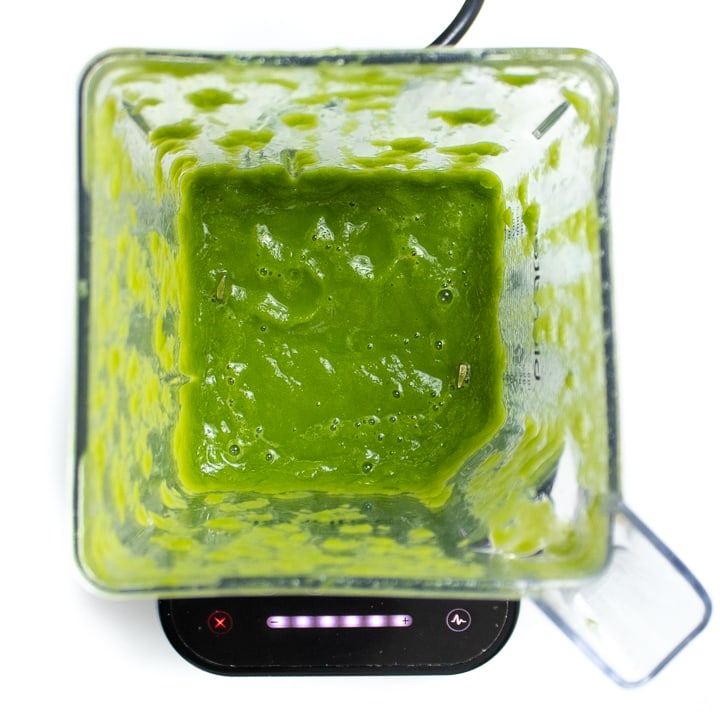
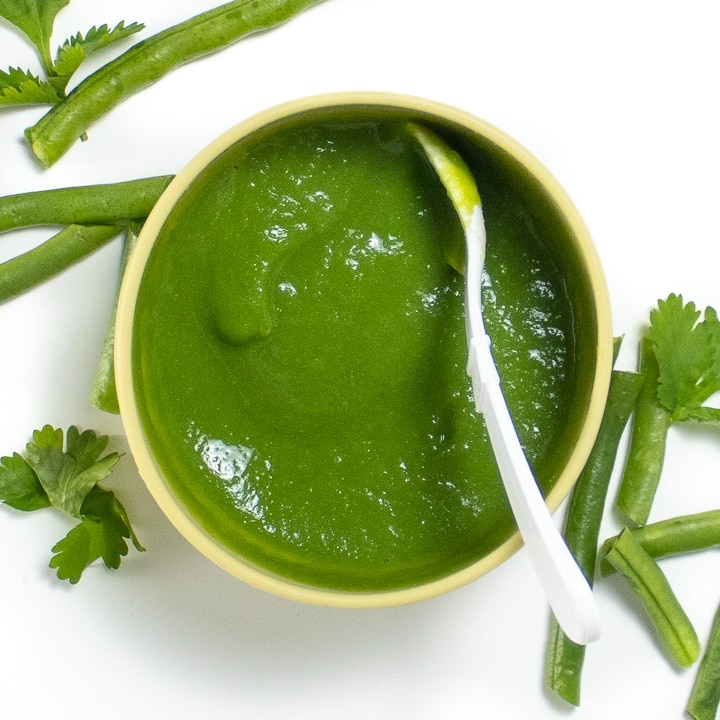
- Trim: Roughly trim the green beans. If you’ll be adding herbs, roughly chop them as well.
- To steam, put 2 inches of water in a medium saucepan and heat it over medium-low. Put fresh or frozen green beans in a steamer basket over boiling water. Cover and cook for 10 minutes, or until the beans are soft. Let it cool slightly — reserve the steamer water.
- Puree: Put the green beans and herb in a blender or food processor and blend for one to two minutes, or until the mixture is smooth. If you need to, add more liquid by 1/4 cup at a time until you get the right consistency.
- Eat: Serve to your baby or freeze for later.

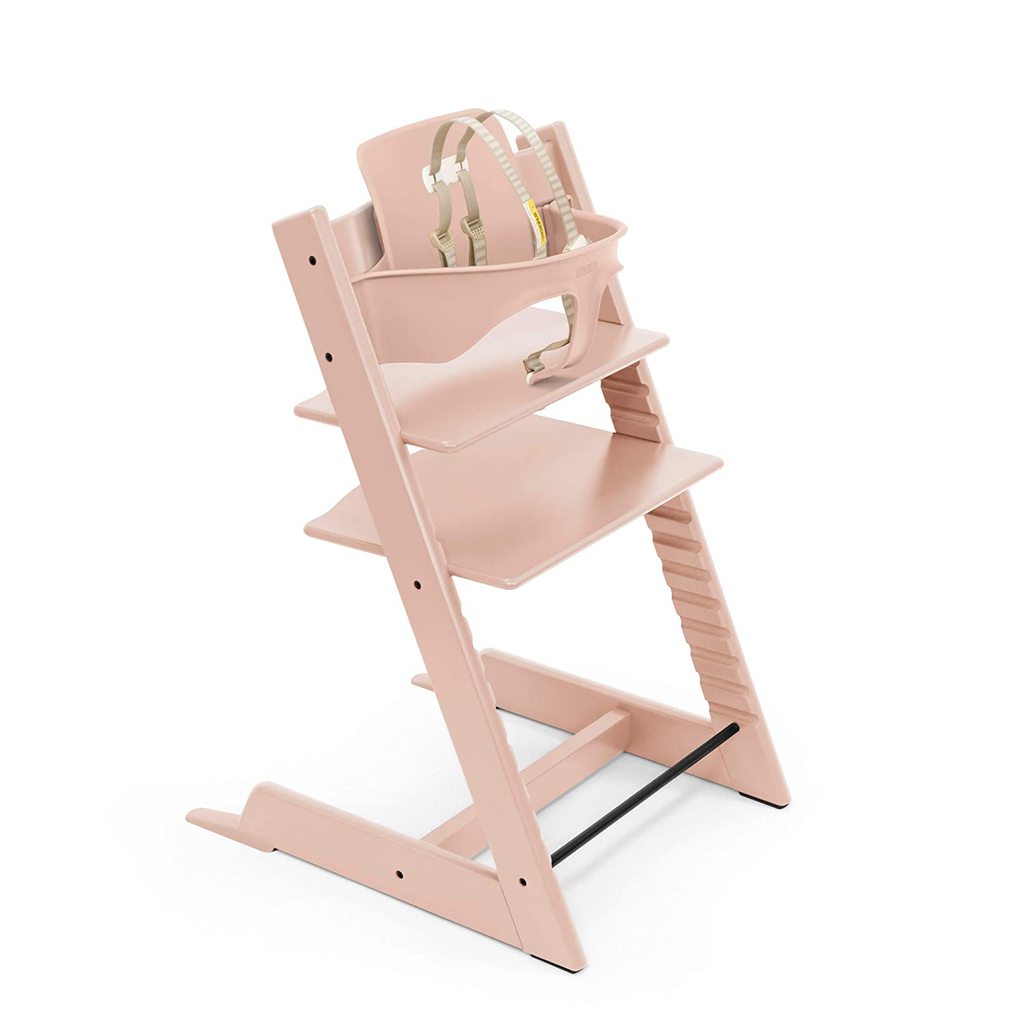
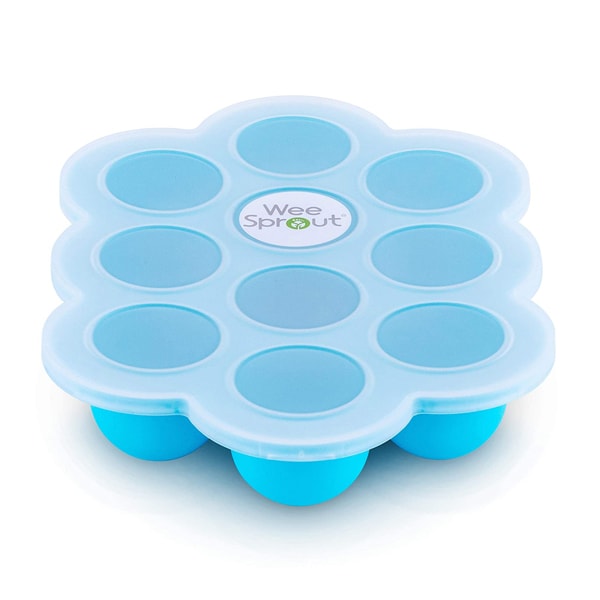
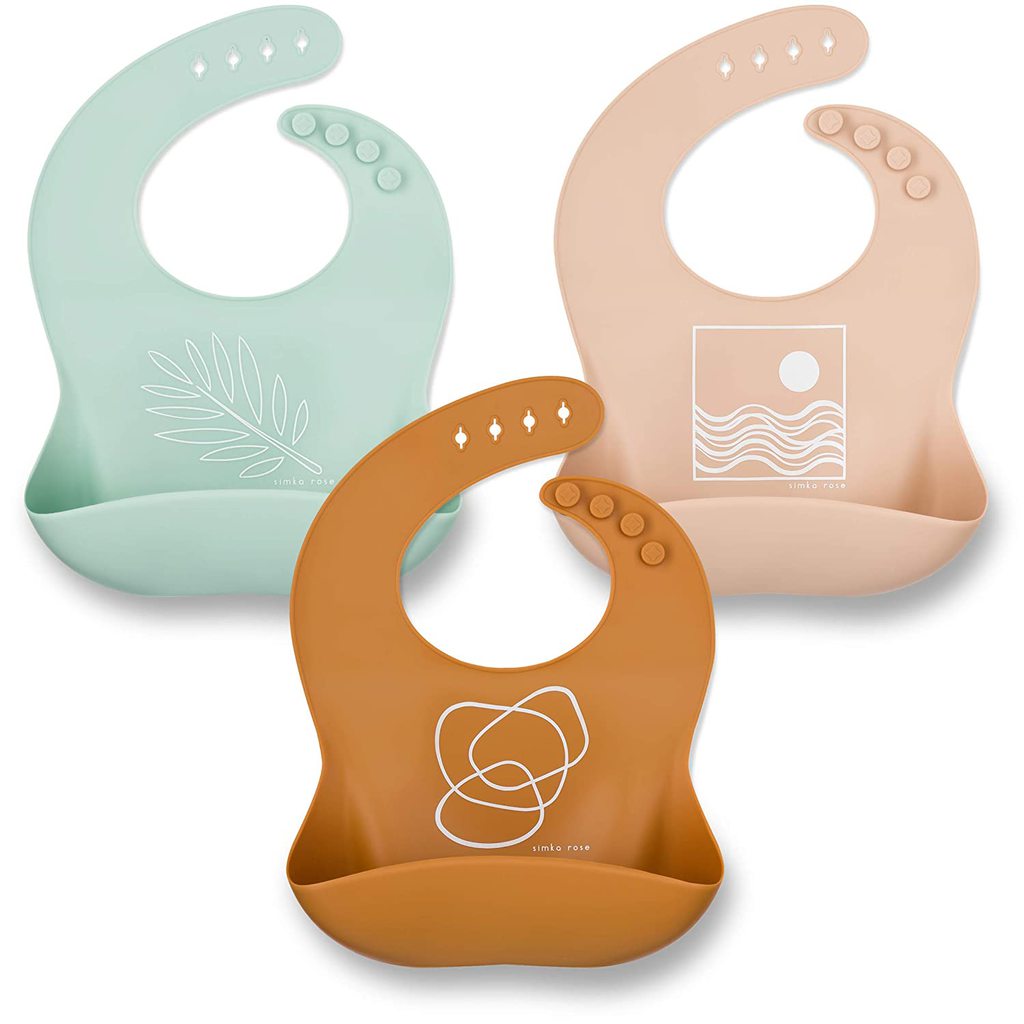
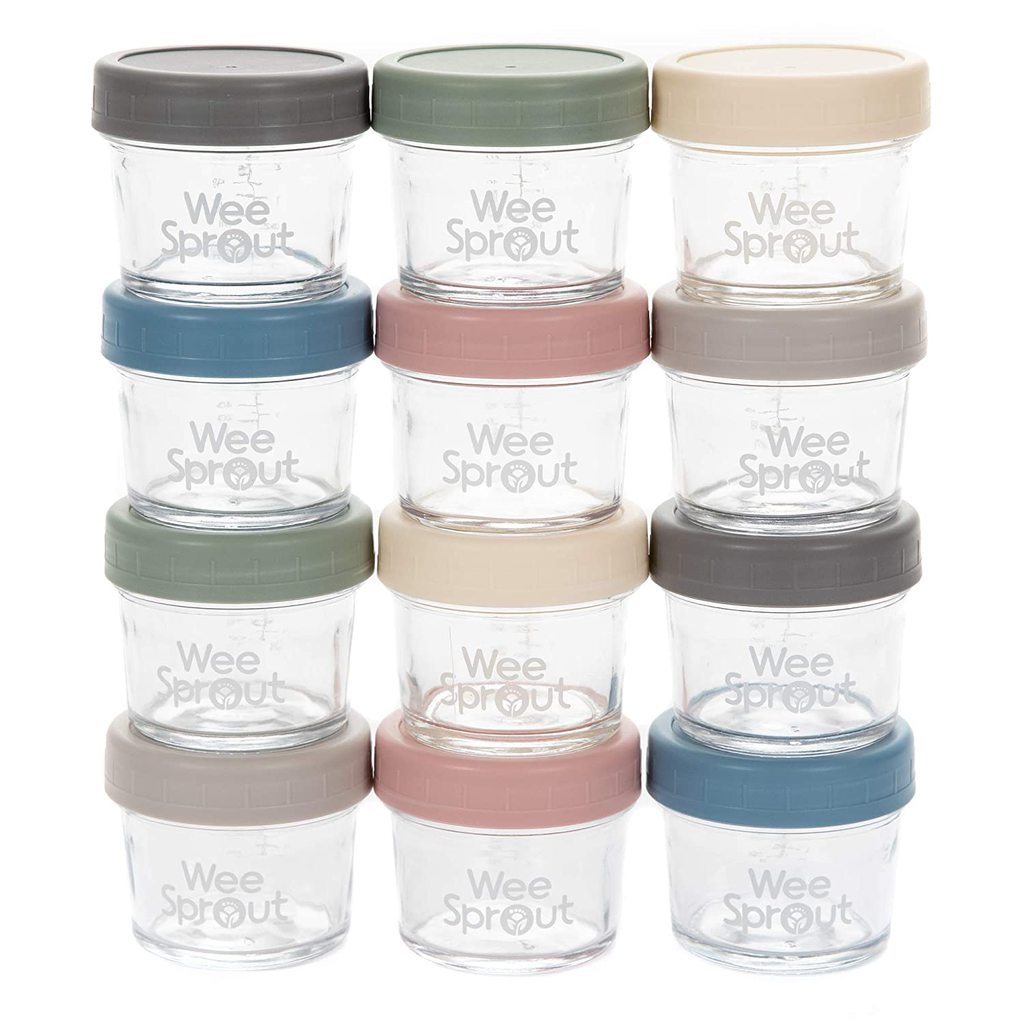
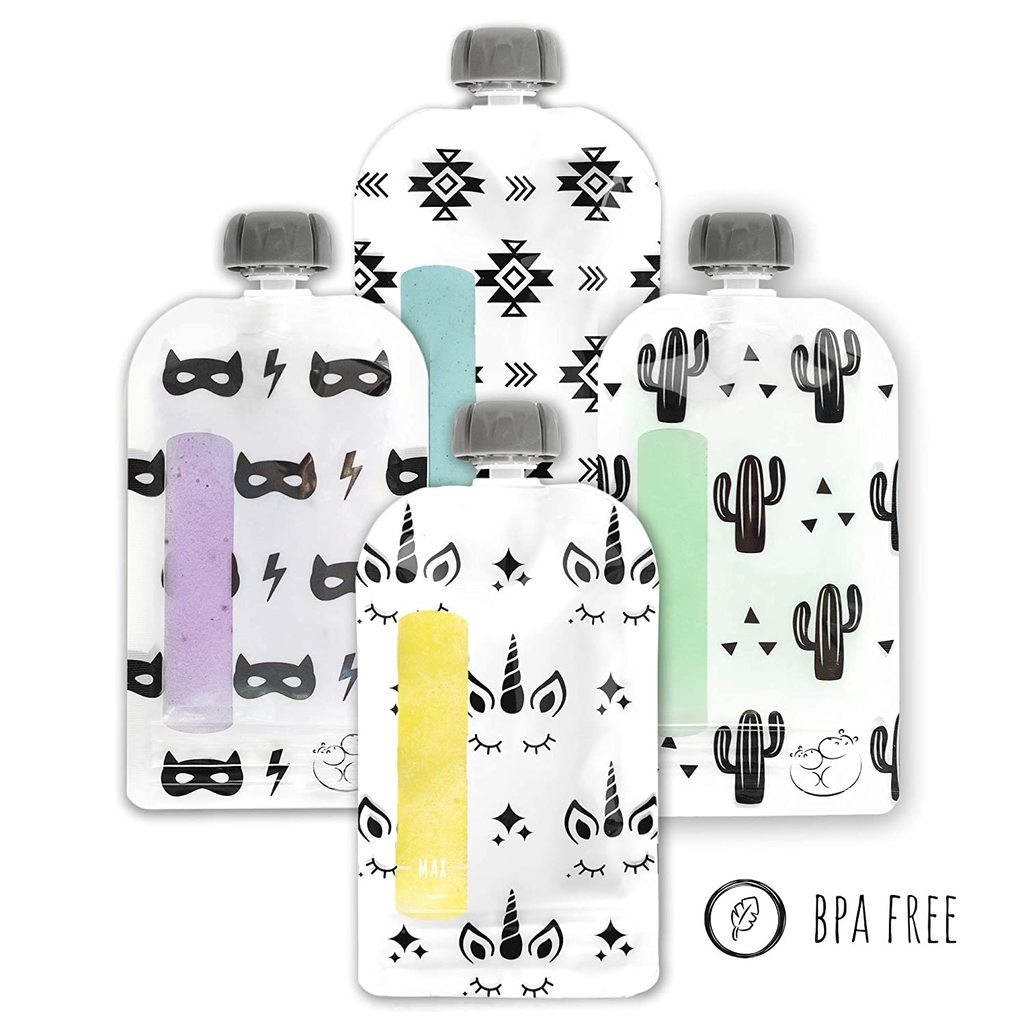
These tools will make it a lot easier for you to make this healthy Green Bean Puree. For more of my favorite kitchen tools make sure to check out my shop.
- Adding Healthy Fats: A teaspoon of olive oil, avocado oil, or coconut oil goes great with this green bean puree. Green beans already taste nutty, but healthy fats will make them taste even better. They will also help your baby get healthy fats.
- Fresh or Frozen: You can make this recipe with either fresh or frozen green beans.
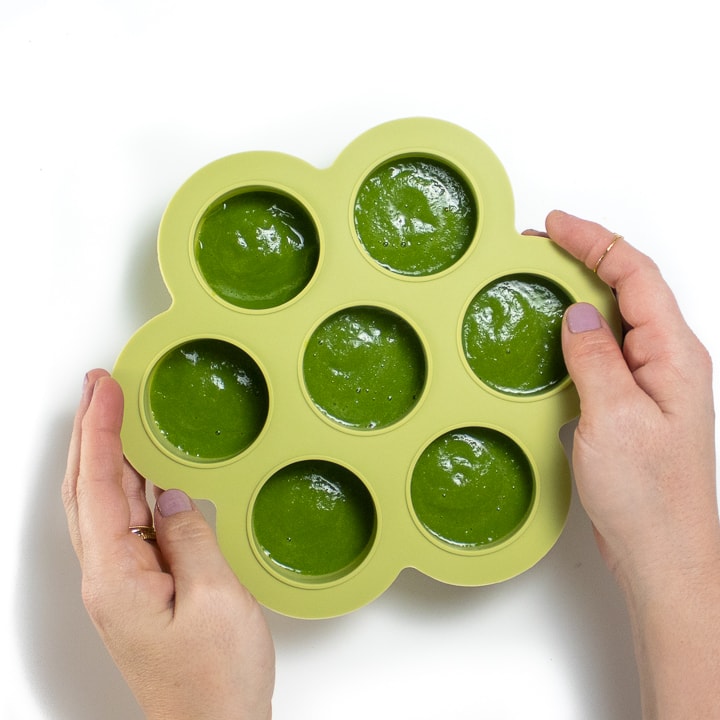
There are several ways to cook green beans for baby food. I like how crisp and fresh they taste when they are steamed.
Before you put the green beans in a large skillet with 1 tablespoon of olive oil, make sure they are clean. Cook for 5-7 minutes, add 2 tablespoons of water, cover, and cook for 2 more minutes. Puree in a blender as directed below.
If you want the baby puree to have a dense, earthy taste, then roast the green beans instead.
Clean the green beans and put them on a baking sheet. Toss them with 1-2 tablespoons of olive or avocado oil. For 18 to 20 minutes at 425 degrees F, tossing once during the baking time, or until a fork can go through it easily. Puree in a blender as directed below.
Babies can have green beans as one of their first foods. Your baby’s rate of development will determine when they are ready to start solids. Usually, this is between 4 and 6 months of age. Among the developmental milestones babies must reach before they can start solids are being able to fully control their head and neck, having gained twice as much weight, and reaching for or opening their mouth when you eat (see my guide here). Before giving baby purees, you should check with your child’s pediatrician to make sure they are ready for it.
Green beans can 100% be your baby’s first food if you want it to be. It is best to wait to give your baby the top eight allergen foods until they have tried a few other foods that they can handle. Other than that, you can give your baby foods in any order you want, so pick the one you are most excited for them to try.
No, green beans are not usually an allergen. But, as with any food, you should start with a small amount and watch out for any signs of an allergic reaction after you eat it.
Most of the time, green beans don’t make babies constipated. In fact, their high fiber content may help babies who are constipated.
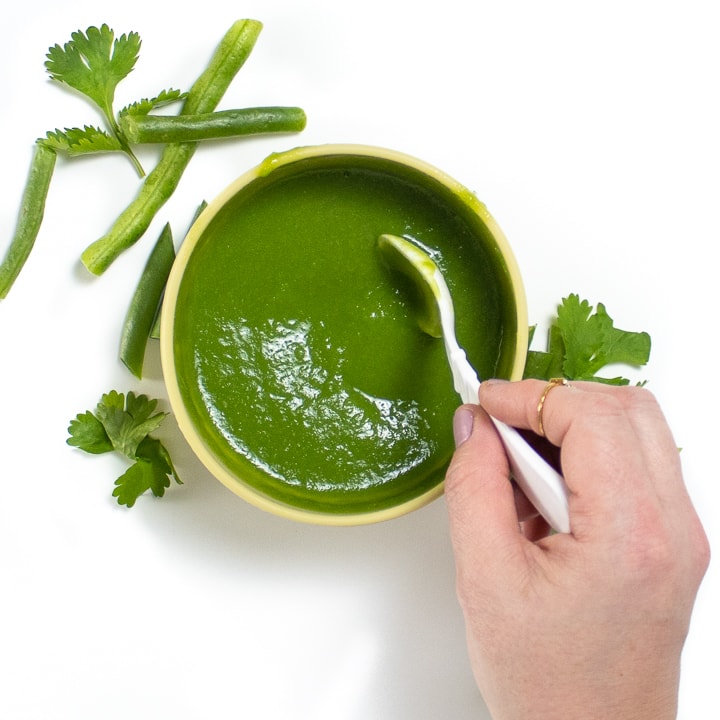
Before you blend this puree, you can add a big pinch of chopped basil, cilantro, mint, parsley, or chives.
Coconut Oil: Another great addition to this puree is adding 1-2 teaspoons of organic virgin coconut oil. Coconut oil and other healthy fats can help your baby’s brain grow and work better. They can also heal muscles that are torn or strained, which is great for crawlers, and they’re great for digestion.
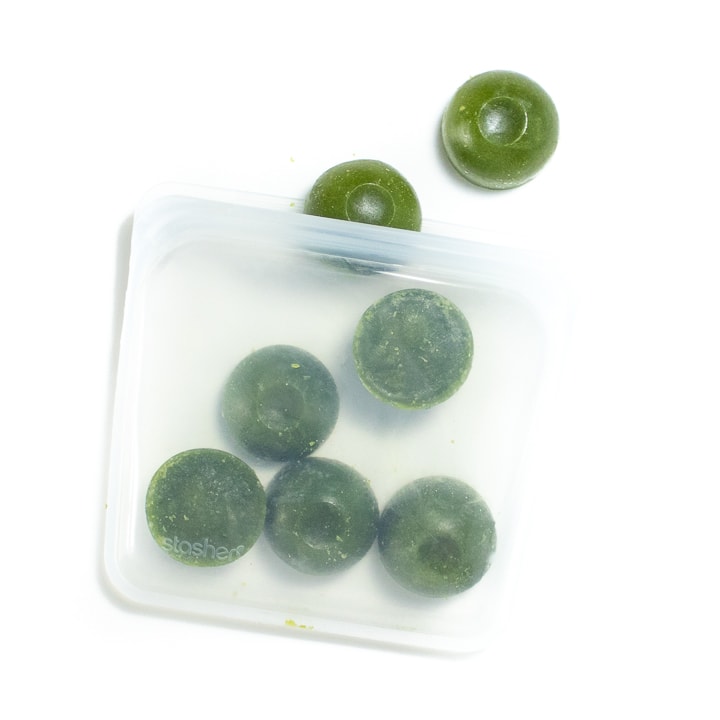
How to Store Green Bean Puree
You can store this puree in an airtight container in the fridge for up to 4 days.
This puree can be frozen for up to 4 months.
- Spoon puree into a freezer storage container. Do not overfill.
- Put the lid on the container or cover it with saran wrap. Write the date and the name of the recipe on the label.
- Put the tray in the freezer and leave it there for at least one night to freeze completely.
- Remove the baby food cubes and put them in a zip-lock bag or a stasher bag. Don’t forget to change the name on the baggie or stager bag so you can find it again.
Do you want to learn more about how to store baby food? Check out my post on the Best Baby Food Storage Containers – Plus 6 Tips on Freezing and Thawing.
Label Tip: Write the name of the puree and the date you made it on the labels of your purees before putting them in the fridge or freezer. I can promise you that by the end of the week, you won’t remember what’s in your freezer or how long it’s been there. .

Green Bean Puree Stage 1 Baby Recipe How To
FAQ
Why won’t my green beans puree?
Can you use canned green beans for baby puree?
How do you thicken green bean puree?
